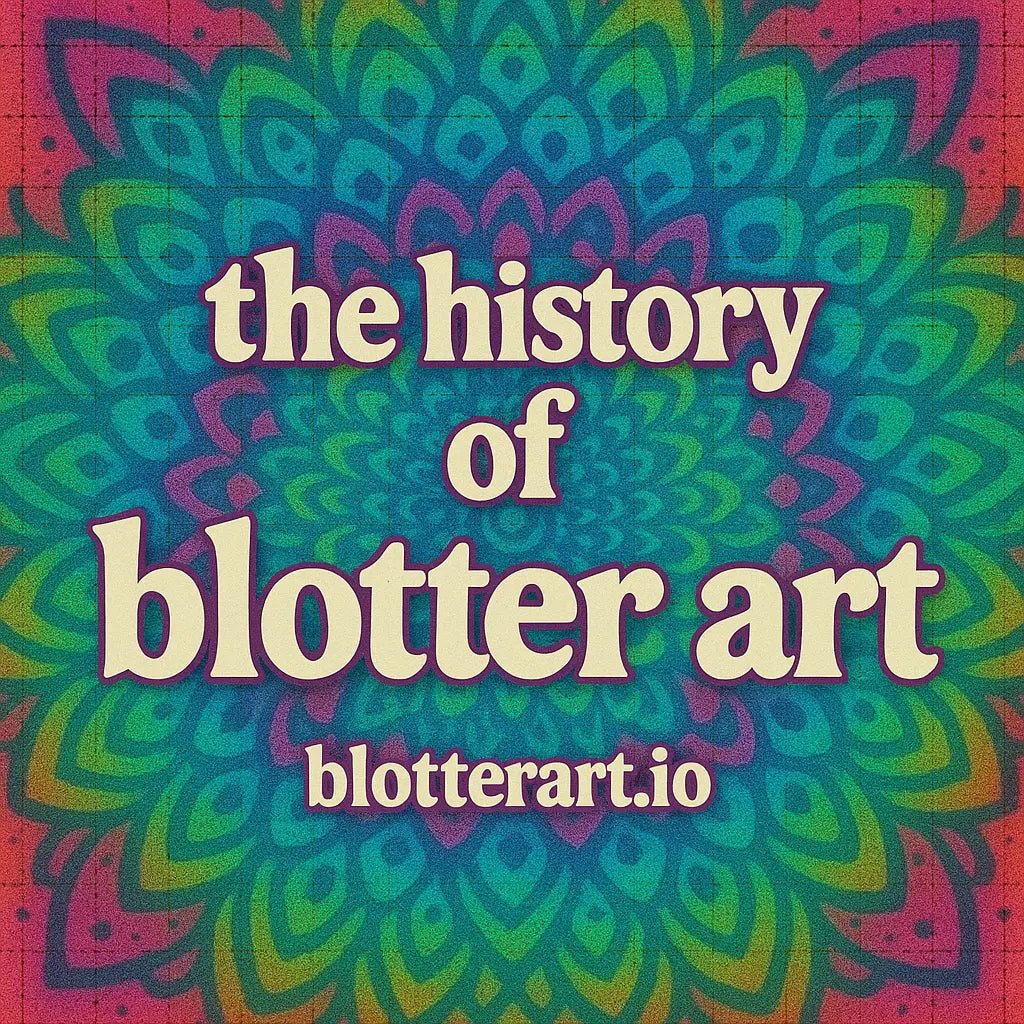Blotter art is more than just paper with colorful designs — it’s a fascinating intersection of psychedelic culture, underground history, and fine art collecting. While originally tied to the LSD counterculture of the 1960s and ’70s, blotter art has since evolved into a legitimate and highly sought-after collectible, with artists around the world producing stunning designs for display and investment.

At BlotterArt.io, we specialize in curating rare, authentic, and artist-signed blotter art that celebrates this unique medium’s past and future. Whether you’re a seasoned collector or just discovering it for the first time, understanding the origins and evolution of blotter art can deepen your appreciation for these miniature masterpieces.
Origins in the Psychedelic Underground
In the late 1960s, as LSD gained popularity among counterculture communities, dealers needed a way to distribute precise doses discreetly. The solution? Sheets of perforated blotter paper, each small square infused with a single dose of LSD. Creative minds began decorating these sheets with bright, surreal, and symbolic designs — partly to identify batches, partly to celebrate the psychedelic experience itself.
While the original intent was functional, the blotter art itself became an underground form of expression. Many early designs featured pop culture references, spiritual symbolism, and intricate patterns that mirrored the hallucinatory visuals of an acid trip.
From Utility to Collectible Art
By the late ’80s and ’90s, blotter art began to be recognized as an art form in its own right. Artists like Mark McCloud and others started preserving and framing unused sheets as cultural artifacts. Collectors sought out vintage blotter art from legendary print runs, often paying thousands of dollars for pristine, unsigned sheets.
This shift allowed blotter art to step out of the underground and into galleries, conventions, and private collections. Today, the market includes not just vintage sheets but also modern signed blotter art by well-known psychedelic artists.
The Rise of Vanity and Custom Blotter Art
In recent years, vanity blotter art — designs made purely for display, with no active substances — has surged in popularity. These sheets allow artists to explore psychedelic visuals freely, while collectors can own and showcase the work without legal concerns.
For those who want something truly unique, custom blotter art production has become a thriving niche. Companies like CustomBlotterArt.com work with artists, brands, and collectors to create personalized designs — whether for exhibitions, commemorations, or limited-edition sales.
Why Collectors Love Blotter Art
Blotter art appeals to a wide range of people:
-
Art Enthusiasts — The combination of miniature scale and intricate design offers a rare aesthetic.
-
Cultural Historians — These sheets document the evolution of psychedelic culture.
-
Investors — Rare and vintage blotter art often appreciates in value over time.
-
Psychedelic Community Members — The designs resonate deeply with those who value the counterculture movement.
Many collectors prefer signed blotter art because it verifies authenticity and connects the work directly to the artist. Others love vanity or custom sheets because they reflect personal taste and creativity.
Preserving and Displaying Your Collection
If you own blotter art — whether vintage, signed, or custom — proper preservation is key. Keep sheets in acid-free sleeves, away from direct sunlight, and consider framing them under UV-protected glass. This not only maintains condition but also turns your collection into a striking visual display.
Where to Find Rare and Custom Blotter Art
At BlotterArt.io, we carry a wide range of vintage blotter art, modern signed blotter art, and collectible vanity prints. If you’re looking to create your own unique piece, we recommend CustomBlotterArt.com for custom blotter art production tailored to your vision.
From the counterculture streets of the 1960s to contemporary art shows, blotter art continues to inspire, provoke, and captivate. Whether you collect for history, beauty, or investment, these small squares of paper carry a big story.
